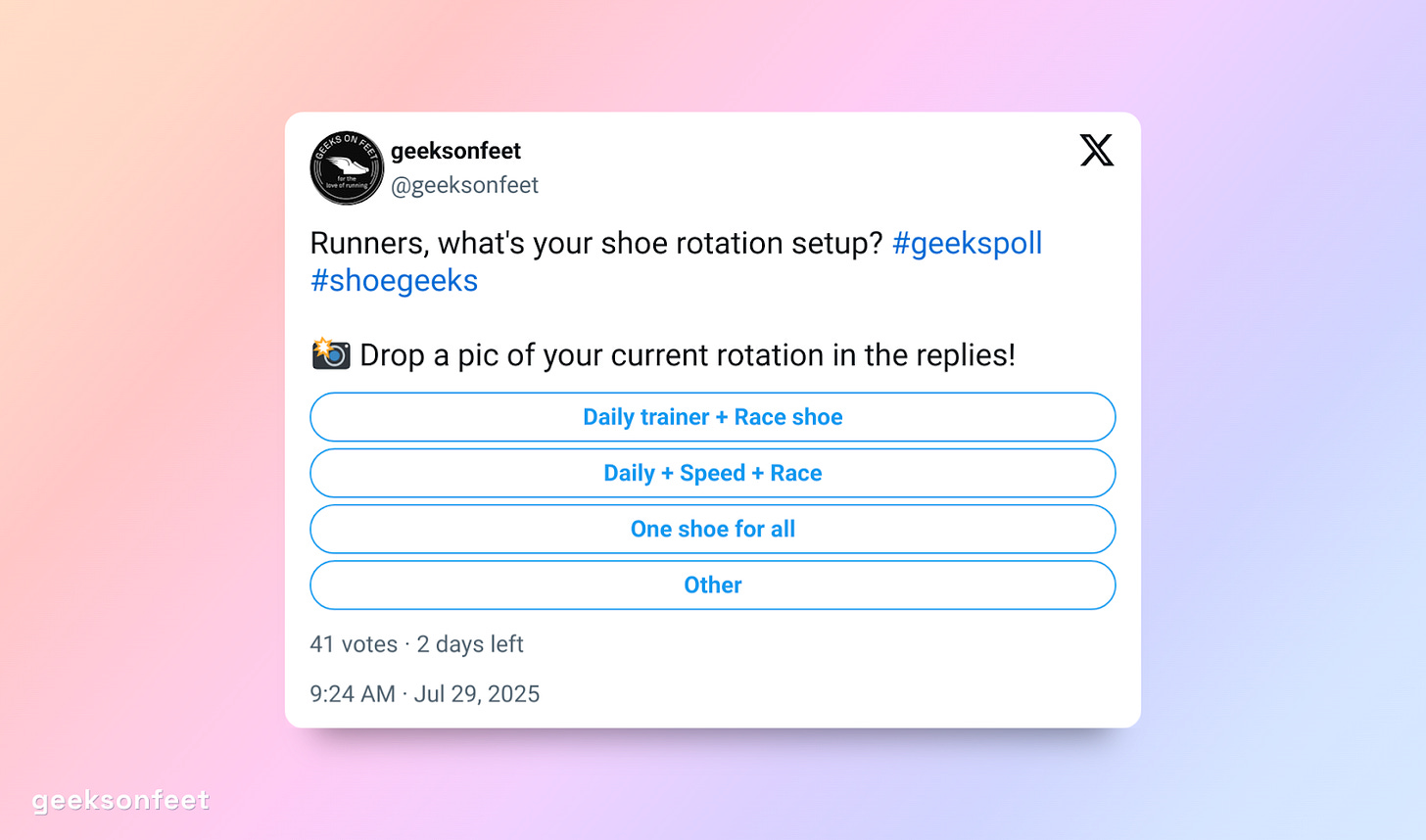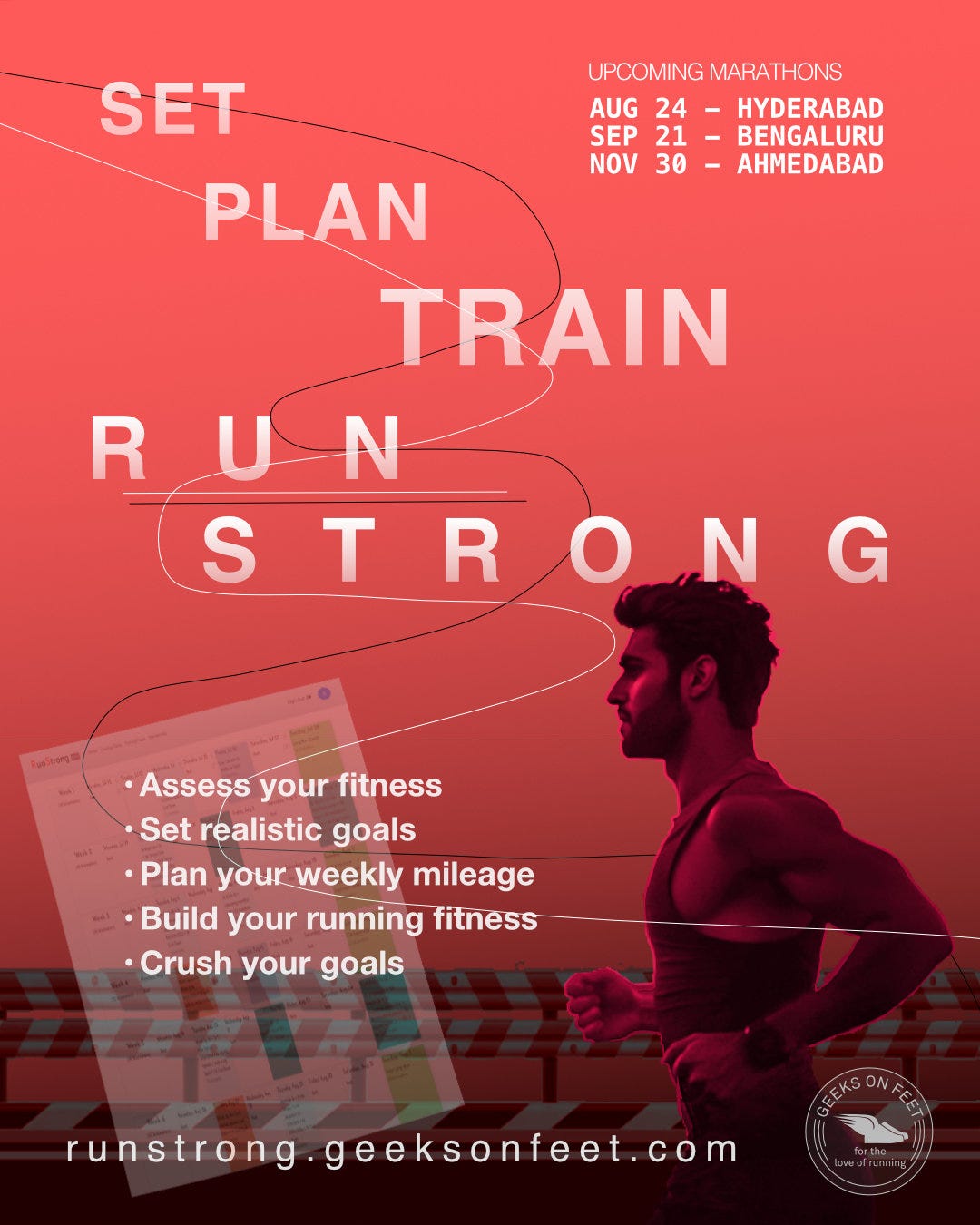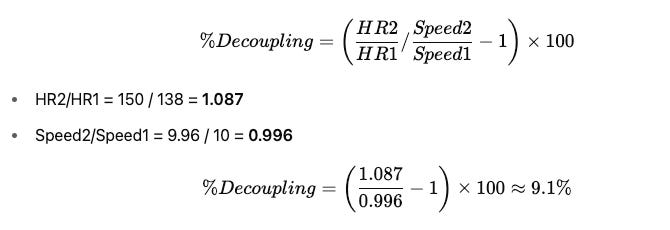Zoom Fly 6 Review, HR Decoupling and more!
#WhatsUpThisWeek?
Shoe Review of Nike Zoom Fly 6 - the super-trainer, & daily comfort with responsiveness. Know all about it at #GeeksonFeet
Walking lunges improve single-leg strength, balance, and core stability. Know how to do it at #WoW
HR Decoupling refers to the degree to which your heart rate deviates from your pace over time. Know all about it in #TipOfTheWeek
Planning to self-train for the upcoming season, we have prepared a self-paced training plan for you at #Runstrong. Whether a beginner or seasoned runner, this plan has something for everyone.
Happy Reading!
#GeeksPoll
Runners, what's your shoe rotation setup? #geekspoll #shoegeeks
📸 Drop a pic of your current rotation in the replies!
Answer Live Poll Here.
The results of last week's poll on the popularity of pickleball/padel and its effect on running are here.
#WoW - Walking Lunge
Walking lunges improve single-leg strength, balance, and core stability. They also enhance hip mobility, activate the glutes, and build endurance and power, translating to better stride mechanics and uphill performance.
How to do it?
Maintain an upright torso.
Step forward with one leg, lowering the back knee close to the ground.
Push off with the front foot to bring the back leg forward into the next lunge.
Engage your core throughout and ensure proper knee alignment over the toes.
Start with 2 sets of 10 reps on each side and slowly increase the reps.
@GeeksOnFeet: Shoe Review: ZoomFly 6
https://shoegeeks.in/review/nike-zoomfly6-002006006/
The Nike Zoom Fly 6 continues the series’ role as the OG super-trainer, balancing daily comfort with super trainer responsiveness. It pairs a full-length plate with a 40 mm ZoomX/SR-02 midsole, delivering a soft ride. At easy and mid paces, the cushioning feels muted, but the shoe comes alive around marathon pace and above, offering smooth, efficient transitions. At ~265 g (UK 9) with an 8 mm drop, it’s lighter than past versions and durable, with the outsole showing minimal wear after 200 km. Read the full review here.
RUN STRONG - Training Plans
Prepares you for the course evaluations
Personalised for your goals
Customised to your fitness
Can be planned per your schedules
Access the plans now at https://runstrong.geeksonfeet.com/training-plans/
#RunSHORTS:
NMDC Hyderabad Marathon is all set for a New Record with 28,000 Runners
The NMDC Hyderabad Marathon, which is now a World Athletics ‘Basic’ Label Race and India’s second-largest marathon, will take place on August 24 with a record 28,000 participants (across distances).
At the jersey and medal unveiling event, two-time women’s World Boxing Champion Nikhat Zareen praised the marathon’s growing popularity and its role in encouraging citizens from Hyderabad and across the country to experience the sport. Read more here.
At RunMechanics, we have assessed 400+ runners. Click here to book your appointment
Race Calendar
Search and find races using our Race Finder at geeksonfeet.com/races.
#TipOfTheWeek: HR Decoupling
Most runners obsess over hitting a zone (say, Z2), but a powerful metric is HR decoupling. HR Decoupling refers to the degree to which your heart rate deviates from your pace over time.
How it works: On a steady-state run (60–90 mins), keep pace constant. Compare HR in the first half vs the second half. If it is less than 5% drift means your aerobic system is efficient at that intensity.
HR Decoupling early indicator of endurance fatigue resistance. When you see decoupling drop over weeks, you know your aerobic base is growing, even if pace/HR zones don’t change much.
<5% = excellent aerobic endurance, 5–10% = okay, >10% = need more base work.
How to calculate:
Suppose you ran a 2-hour steady run at roughly 6:00 min/km pace. In the first hour, the average heart rate settled at 138 bpm, and in the second hour it climbed to 150 bpm, even though the pace only slipped slightly to 6:02 min/km.
You can find the average heart rate and pace by looking at the split/lap view in Garmin/strava and then manually calculating the average for each half.
Then convert the pace to speed:
6:00 min/km = 10 km/hr
6:02 min/km ≈ 9.96 km/hr
HR Decoupling came out to about 9%. That means the heart rate rose significantly. In simple terms, the aerobic system was working harder to sustain the same effort in the second hour.
Anything under 5% is considered a strong sign of aerobic efficiency and good endurance. At 9%, the base training still has room to grow.
Support Us
Our mission is to empower the running community by providing valuable insights into all aspects of running. Through our weekly updates, we’ve been able to make a significant impact, reaching runners across India and beyond.
This wouldn’t be possible without the incredible support and feedback from our community. If you’ve found value in our work and appreciate our efforts, we kindly ask for your support through a donation. Your contribution will enable us to continue delivering high-quality content and help us make an even greater impact.
Thank you for being an integral part of our journey!
Contributors to this edition: Aditi Pandya, Karthik Nadar, and Aravind Yarra









